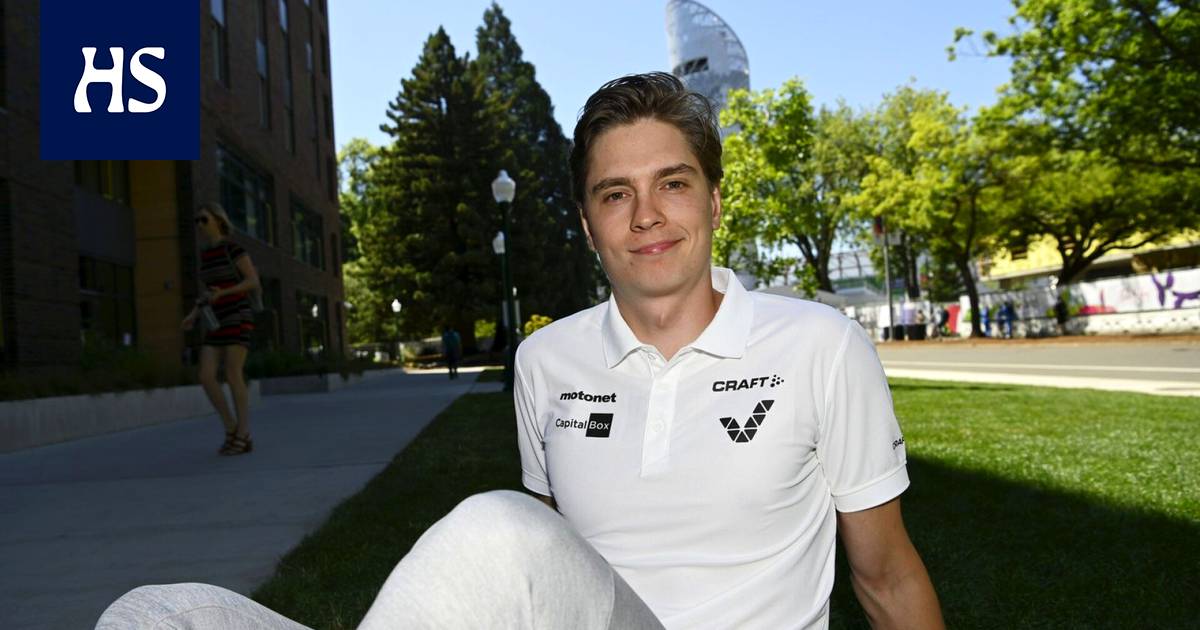Tommi Holttinen is the second representative athlete of the Finnish World Cup team, along with Ella Junnila.
Eugene, Oregon
Tommi Holttinen is the second athlete on the Finnish athletics World Cup team whose father or mother has been a national team athlete.
Ella Junnilan Mum Group Arms successfully jumped long and high. Tommi Holttinen’s father Jari Holttinen competed for a long time in pole vaulting in the 1970s–1990s and won one SC silver outdoors in 1991.
Jari Holttinen also coaches his son, who has so far jumped nine centimeters higher than his father. The father’s record is 555, the son’s 564 from last year. This year he has exceeded 550.
The last time Tommi Holttinen competed in the prestigious competition was in 2018 at the European Championships in Berlin, where he was one place short of the finals with a score of 551. He has been in the youth championships three times, twice in the European Championships and once in the World Championships.
in the World Cup exceeding the 575 cents needed for the final place in the seipä competition. The level is so hard. For Holtti, it can be an impossible task, so to speak.
“Ratings are something I’m familiar with, it’s not impossible. It is easier to relate to the qualification of the World Cup than to the qualification of the Kaleva Games. There’s nothing to lose there, there’s only to be won here,” says Holttinen before the qualifiers, which start at 3:05 a.m. Finnish time on Saturday.
“It’s easy to prepare on the bridge, when you don’t have to think about which rope to jump with, when you just have to go over.”
Pole vault starts at height 530. The following heights are 550, 565, 575 and 580, which is the qualifying limit. You hardly need to jump from that high, when the 12 jumpers of the final are clear.
Holttinen reminds that he has the same starting situation now as four years ago at the European Championships. The native of Turku was the last jumper in the statistics, but he made an effort almost to the final.
“In qualifying, some always strain themselves out, or some don’t go. I myself know how to turn excitement into energy for the race.”
Holttinen knows how to handle the body’s energy. He is studying to become a physiotherapist at Turku University of Applied Sciences.
In Turku has a strong representation at the World Championships. In addition to Holttinen, he is also a thrower Silja Kosonen and a javelin thrower True Erkkola represent the Turku Sports Association. Pole vaulter Wilma Murto and a high jumper Heta Tuuri are at the Turku Sports Academy.
“In the Turku region, there are a lot of people who go to prestigious competitions for young people and a good group in athletics,” says Holttinen.
From Seiva Inspired by his father, Holttinen has been jumping since he was a little boy. In that sense, he is on the same path as the Swede Armand Duplantiswho started jumping when he was little, his father Greg Duplantisin learning.
Duplantis is the overwhelming favorite to win the World Championships, such as Yulimar Rojas in the triple jump and Sydney Mclaughlin in 400 meter fences.
“I have grown up pole vaulting all my life. I’ve been jumping that for as long as I can remember,” says Holttinen, who also played ice hockey when he was young.
Finland’s second jumper in pole vault qualifying is Mikko Paavolawho has surpassed 570 this season.
Also with Paavola’s father With Jyrki Paavola has an athletics background as a decathlon (record 6,628 points).
Read more: Mikko Paavola has refined the ease of his jumping, “so that the performance is not only based on incredible physical condition”
It’s getting harder to transport the fins all the time
Pole vaulting is a sport where jumpers must have their own equipment. There is no need to have organizers’ wings at the competition venue.
According to Finnish pole vaulters, airlines have tightened their rules, and it is increasingly difficult to transport poles from one place to another.
“Many airlines no longer even take wings to transport. For example, American jumpers must soon have another set of poles ready in Europe”, Mikko Paavola says.
“Airlines don’t have to explain why they don’t take fins on board. Many people say they don’t take wings, and it has categorically increased after the corona virus,” Tommi Holttinen says.
The company takes a transport compensation of about 100 euros for the rod pipe. The value of a five-meter fishing pole is around 7,000–8,000 euros, so losing it can be expensive.
In throwing events, you can use the competition organizers’ equipment, but the javelin is always personal. You can also borrow them from your competitor during the race, but you don’t have to give them.
“The length of the soap, the grip and the brand. It has elements that make it personal. You could find a similar stick from a friend, but it’s quite rare and does anyone want to use borrowed tools,” says Paavola.
Read more: Finland had two men in the javelin final – Helander only threw once, according to Etelätalo as the last thrower: “I was pretty sure that one throw was enough”
Read more: Wild party of speed in Eugene: Nooh Lyles and Shericka Jackson win 200 meters in top times
Read more: The US medal candidate was sidelined from the World Championships – deficiencies in whereabouts information led to a conditional ban
Read more: Amazing 200m winning times among the best of all time, two Finns advanced to the javelin final – HS compiled the night’s highlights
Read more: Panic disorder was like a bear in the forest for Aku Beard: “It’s a disorder that comes, even if there isn’t a bear”
Read more: “Hapottaa” – Eveliina Määttänen gave everything in her life in the first value race run
